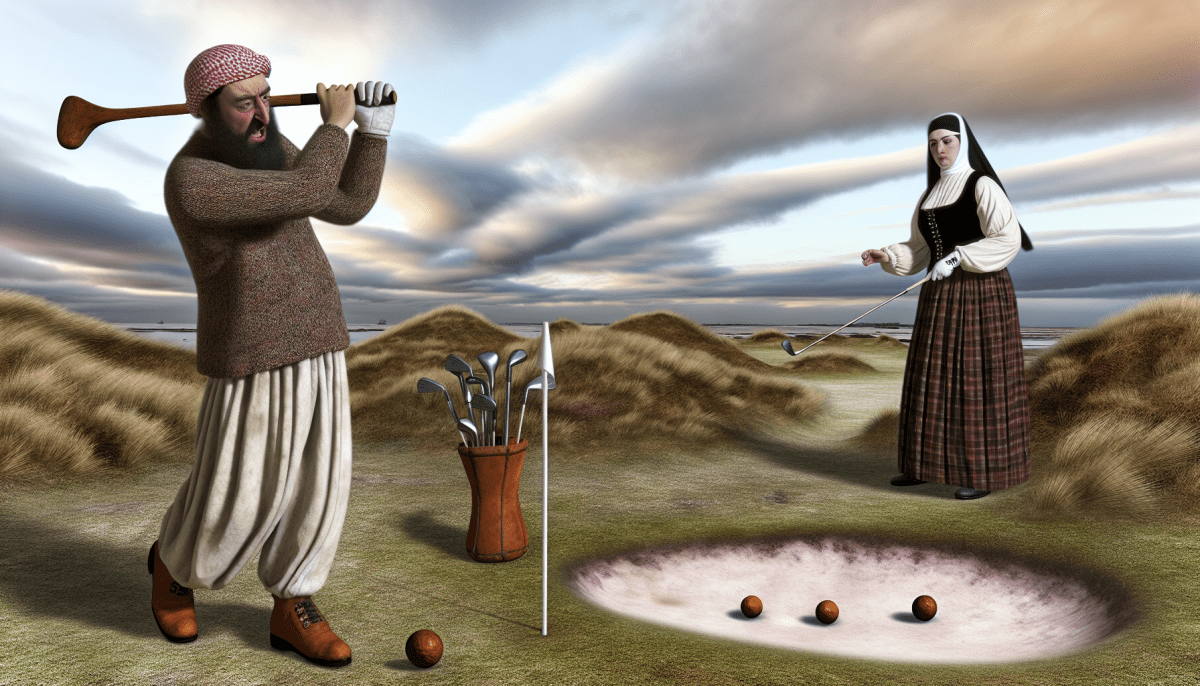The first documented mention of golf dates back to 1457 when King James II of Scotland banned the game due to its perceived interference with military training. Despite this ban, golf flourished in the lowlands of Scotland, particularly in cities like Edinburgh and St. Andrews. By the 16th century, the sport had gained royal favor, with King Charles I being a known enthusiast. This popularity helped to shape the early rules and formal etiquette that we still see in the game today.
The establishment of the Old Course at St. Andrews in the 15th century marked a pivotal moment in the development of golf. This legendary course not only became a central hub for golfers but also played a significant role in the formalization of the sport. The founding of the first golf club, the St. Andrews Golf Club, in 1754 further propelled the game's popularity, leading to the creation of standardized rules that have continued to evolve over the years.
As golf grew in popularity, it became an international sensation by the 19th century. The sport spread beyond Scotland, reaching England, the United States, and beyond. Golf’s appeal lay in its unique combination of skill, patience, and strategy, all set against the backdrop of beautiful landscapes. Various tournaments began to take shape, solidifying golf as a competitive sport that attracted players from all walks of life.
Growth and Popularity Over Time
The growth and popularity of golf have transformed immensely since its humble beginnings. Originating in the 15th century in Scotland, the game was primarily played by the nobility. The rolling greens and gentle hills of the Scottish countryside provided the perfect backdrop for this leisurely pursuit. Over the years, golf began to spread beyond Scotland's borders, captivating the hearts of people across Europe and eventually reaching North America in the 19th century.
As the 20th century rolled around, golf entered a golden age. Major tournaments like The Open Championship, the U.S. Open, and the Masters attracted large audiences both in person and through the newly popular medium of television. Iconic players like Bobby Jones, Ben Hogan, and Arnold Palmer became household names, bringing the game into the mainstream. Golf was no longer just a pastime for the elite; it was becoming a beloved sport for people from all walks of life.
By the late 20th century, the explosion of golf's popularity soared with the rise of Tiger Woods in the 1990s. Woods’ charisma, talent, and groundbreaking success brought an entirely new audience to golf, inspiring millions to pick up a club for the first time. Golf courses began sprouting up across the globe, and the game became more accessible than ever before. This era marked a significant shift in the demographics of golfers, with more women and younger players taking to the greens.
In the 21st century, golf continues to evolve, adapting to changing societal trends and technological advancements. Golf simulators and online instruction have made it easier for fans to play and learn from the comfort of their homes. The sport's increasing presence on social media platforms has also helped to engage a younger audience, resulting in a vibrant community that celebrates both the athletes and the love of the game. As golf evolves, its charm and appeal remain unwavering, promising a bright future for this timeless sport.
Key Innovations in Equipment
Golf has seen a remarkable evolution in its equipment over the years, driven by innovation and the desire for improved performance. From the early days of wooden clubs to the high-tech drivers of today, each advancement reflects a deeper understanding of the game's intricacies. One of the significant breakthroughs came with the introduction of metal woods, which revolutionized the way players approach long-distance shots. Unlike their wooden counterparts, metal woods offered more durability and a larger sweet spot, allowing golfers to achieve greater distance and accuracy.
Another major innovation in golf equipment is the evolution of golf balls. Early golfers played with leather balls stuffed with feathers, which were not only inconsistent but also challenging to control. The introduction of the gutta-percha ball in the 19th century marked a turning point, offering a more reliable and consistent performance. Today, modern golf balls are engineered with various layers and materials to optimize distance, spin, and control, greatly enhancing a golfer’s ability to navigate the course.
The development of golf shoes has also played a crucial role in improving performance. Initially, golfers played in everyday footwear, which provided little support or traction. The advent of specialized golf shoes, featuring spikes and advanced materials, has significantly improved stability and comfort during swings. This enhancement allows players to maintain their balance, ultimately leading to better swings and improved scores on the course.
Finally, technology has made its mark on golf with the introduction of launch monitors and swing analyzers. These devices provide golfers with detailed feedback on their swing mechanics, ball speed, and angle of launch. With this data, players can make informed adjustments to their technique, which can lead to significant improvements in their game. As golf continues to evolve, the equipment we use will undoubtedly keep enhancing the experience for players of all skill levels.
Modern Golf Culture and Trends
Modern golf culture has transformed significantly over the past few decades, moving from a sport often associated with elite circles to a more inclusive pastime enjoyed by people from all walks of life. This shift has been fueled by a growing interest in health and fitness, as well as the rise of new technologies that make the game more accessible. Today, golf is not just about the scorecard; it's also about community, wellbeing, and having fun outside.
One notable trend is the increase in various formats of the game that cater to different skill levels and preferences. Traditional stroke play still holds its charm, but alternative formats such as scramble tournaments and match play are gaining traction. Additionally, many golf courses are introducing shorter layouts or "executive courses" that allow for quicker rounds, appealing to younger players and busy professionals who often struggle to find time for a full 18 holes.
Furthermore, technology plays a significant role in modern golf. The introduction of golf simulators, mobile apps, and digital score tracking has made the game easier to learn and enjoy. Social media platforms have also helped popularize the sport, creating communities where players share experiences, tips, and even their golf journeys. This connectivity has fostered a sense of belonging among golfers, bridging gaps across different demographics.
Lastly, sustainability has become a key focus in modern golf culture. Many courses are adopting eco-friendly practices, such as using organic fertilizers and implementing water conservation techniques. This shift reflects a broader trend toward environmental responsibility within sports, encouraging golfers to think about their impact on the planet while enjoying their favorite pastime.



